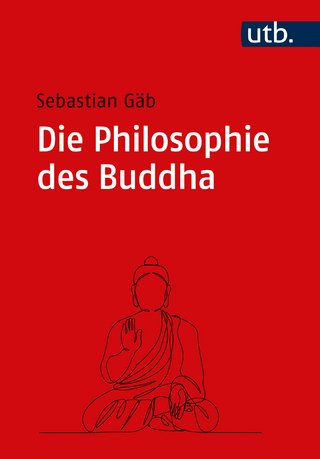
The Buddhist Unconscious
The Alaya-vijñana in the context of Indian Buddhist Thought
Seiten
2006
Routledge (Verlag)
978-0-415-40607-9 (ISBN)
Routledge (Verlag)
978-0-415-40607-9 (ISBN)
This study focuses on the development of the concept of unconscious mind within Indian Buddhist thought, presents issues of conception of mind and examines the doctrinal and philosophical arguments described and defended it.
This is the story of fifth century CE India, when the Yogacarin Buddhists tested the awareness of unawareness, and became aware of human unawareness to an extraordinary degree. They not only explicitly differentiated this dimension of mental processes from conscious cognitive processes, but also offered reasoned arguments on behalf of this dimension of mind. This is the concept of the 'Buddhist unconscious', which arose just as philosophical discourse in other circles was fiercely debating the limits of conscious awareness, and these ideas in turn had developed as a systematisation of teachings from the Buddha himself. For us in the twenty-first century, these teachings connect in fascinating ways to the Western conceptions of the 'cognitive unconscious' which have been elaborated in the work of Jung and Freud.
This important study reveals how the Buddhist unconscious illuminates and draws out aspects of current western thinking on the unconscious mind. One of the most intriguing connections is the idea that there is in fact no substantial 'self' underlying all mental activity; 'the thoughts themselves are the thinker'. William S. Waldron considers the implications of this radical notion, which, despite only recently gaining plausibility, was in fact first posited 2,500 years ago.
This is the story of fifth century CE India, when the Yogacarin Buddhists tested the awareness of unawareness, and became aware of human unawareness to an extraordinary degree. They not only explicitly differentiated this dimension of mental processes from conscious cognitive processes, but also offered reasoned arguments on behalf of this dimension of mind. This is the concept of the 'Buddhist unconscious', which arose just as philosophical discourse in other circles was fiercely debating the limits of conscious awareness, and these ideas in turn had developed as a systematisation of teachings from the Buddha himself. For us in the twenty-first century, these teachings connect in fascinating ways to the Western conceptions of the 'cognitive unconscious' which have been elaborated in the work of Jung and Freud.
This important study reveals how the Buddhist unconscious illuminates and draws out aspects of current western thinking on the unconscious mind. One of the most intriguing connections is the idea that there is in fact no substantial 'self' underlying all mental activity; 'the thoughts themselves are the thinker'. William S. Waldron considers the implications of this radical notion, which, despite only recently gaining plausibility, was in fact first posited 2,500 years ago.
William S. Waldron received his PhD in Buddhist Studies from the University of Wisconsin after studying extensively in India, Nepal and Japan. He currently teaches South Asian religions and Buddhist philosophy at Middlebury College, Vermont. His research areas include the Yogacara school of Indian Buddhism, and comparative psychologies and philosophies of mind.
Part I - The Background and Context of the Ãlaya-vijñãna Part II - The Abhidharma Context 15. The Abhidharma Project and its Problematic Part III - The Alaya-vijñana in the Yogacara Tradition, The Alaya-vijñana in the Early Tradition Part IV - The Alaya-Vijñana in the Mahayana-samgraha I : Bringing It All Back HomePart V - The Alaya-Vijñana in the Mahayana-samgraha II: Looking Beyond
| Erscheint lt. Verlag | 6.4.2006 |
|---|---|
| Reihe/Serie | Routledge Critical Studies in Buddhism |
| Verlagsort | London |
| Sprache | englisch |
| Maße | 156 x 234 mm |
| Gewicht | 408 g |
| Themenwelt | Geisteswissenschaften ► Philosophie ► Östliche Philosophie |
| Geisteswissenschaften ► Religion / Theologie ► Buddhismus | |
| ISBN-10 | 0-415-40607-2 / 0415406072 |
| ISBN-13 | 978-0-415-40607-9 / 9780415406079 |
| Zustand | Neuware |
| Haben Sie eine Frage zum Produkt? |
Mehr entdecken
aus dem Bereich
aus dem Bereich


